- Roll Roll AI: Build // AI.
- Posts
- Context Engineering: So Hot Right Now
Context Engineering: So Hot Right Now
It was ALWAYS about context
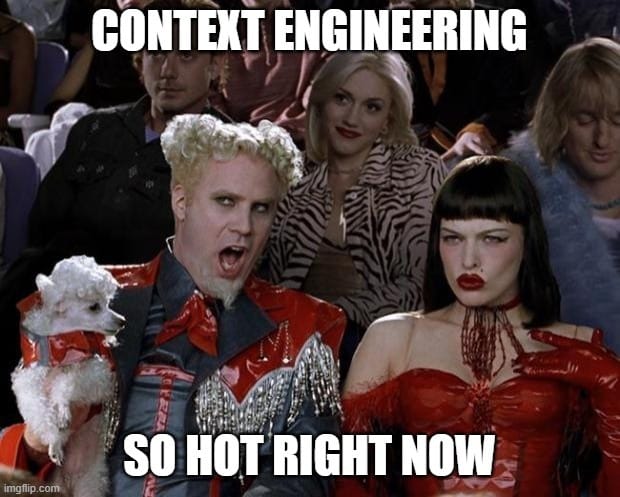
Remember when everyone thought they did crack the AI code by learning how to write “the perfect prompt”?
“Just say ‘please’, ‘think step by step’, ‘I will pay you 1000$ dollars’ and what the magic happen!” Well, suprise: It’s a bit more complicated than that.
Don’t get me wrong, prompts matter, especially systems prompts. But thinking that good prompts equal good AI products is like believing that knowing how to ask for directions makes you a city planner. Sure, you might find your way to the coffee shop, but you're not exactly ready to design the whole neighborhood.
So what comes after prompts? The tech world moved on to "context engineering": basically looking not only into the quality of your prompt but the quality of the infrastructure of your AI product. Better, yes. But still missing the point.
Whether you're building a door handle or an AI assistant, success has always come down to one thing: understanding context. Not the technical kind (though that helps), but the human kind.
What do people actually need?
When do they need it?
How do they think about the problem?
Ready to discover why your AI product's should learn from a well-designed doorknob?
Best Reads of the Week
Are You Running in Circles or Ascending a Spiral? - If you’ve ever wondered why the same struggles keep showing up in your life, this piece reframes it by adding a 3rd dimension. Read it to see how your “loops” might actually be your path upward.
AI Makes Opinionated Software More Important Than Ever - If you care about where software is headed in an AI-saturated world, this breakdown shows why having a strong product opinion and not just more features could be the last real moat worth building.
The Memory Operating System for AI - If you want to glimpse the future of AI reasoning and memory, this roundup unpacks the breakthroughs, like MemOS, that could redefine how models learn, think, and remember.
Monetization Isn't Just Pricing - If you’ve ever frozen when asked “What’s the monetization strategy?”, this guide shows product managers exactly how to connect features to revenue without owning pricing.
Let There Be Light: The Prompt Engineering Era
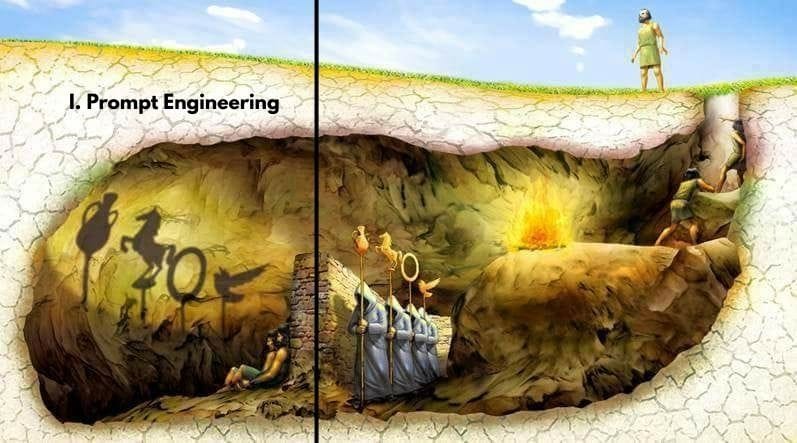
The early days of ChatGPT felt like magic. Type in a question, get an answer. Ask it to write a poem about your cat, and boom Shakespeare for the little kitty. Naturally, everyone thought they had discovered the secret to AI success: just talk to it nicely.
Then came the gold rush. Suddenly, everyone was a "prompt engineer." LinkedIn was flooded with courses promising to teach you the "7 secret words that make AI 10x better" or "How I made $100k with this one weird prompt trick". Prompt libraries, templates, marketplaces, people were selling prompts like shovels during the California Gold Rush.
You can still download 60-page PDFs from major AI players detailing “best practices” in 2025, but most of those prompt-engineering promises have quietly faded away.
What Prompt Engineering Actually Is
Real prompt engineering isn't just asking nicely. It's about understanding how these AI systems actually work. You learn techniques like:
- Chain-of-thought (basically teaching the AI to show its work)
- Few-shot learning (giving examples so the model picks up patterns)
- Role-playing (asking the AI to act as a customer service rep or code reviewer).
The technical folks quickly hit some hard truths. AI models have memory limits, try to cram too much into a single prompt and it starts forgetting things. They hallucinate, making up facts with the confidence of a product manager. And they're inconsistent, ask the same question twice and you might get two completely different answers.
For businesses trying to build actual products, this was a nightmare. How do you create a reliable customer service bot when it might randomly decide to write haikus instead of helping customers?
The fundamental problem was that everyone treated AI like a really smart search engine. Type in your question, get your answer, done. But AI doesn’t “understand” anything, it’s just spectacular at pattern-matching.
Companies started realizing that no amount of prompt wizardry could solve the real challenges: integrating AI into existing systems, maintaining consistent quality, and scaling beyond flashy demos. Turns out, building products is harder than writing clever prompts. Who knew?
Enter Context Engineering
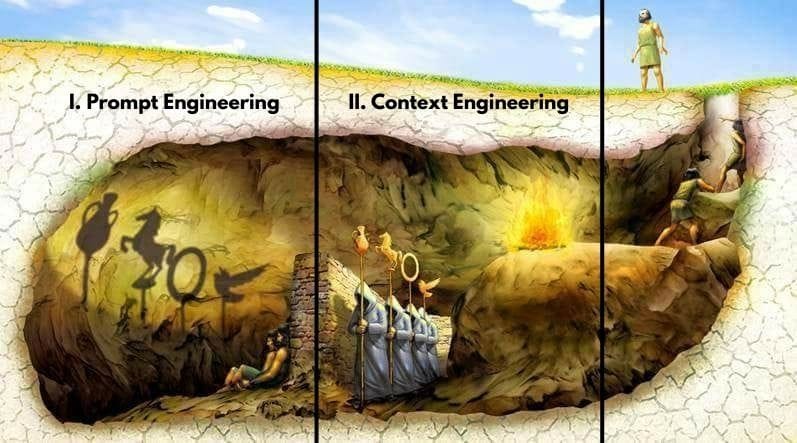
The Evolution Beyond Prompts
So if prompts weren't the answer, what was? Enter "context engineering", the tech world's next big thing for at least the 3 next months! Instead of just crafting the perfect question, engineers started thinking about the entire information ecosystem around the AI.
Think of it like this: if prompt engineering was teaching someone to ask better questions at a library, context engineering is designing the whole library system. You're not just working on what to ask, you're organizing the books, building the catalog system, training the librarians, and figuring out how people actually move through the space.
Suddenly, everyone was talking about vector databases, retrieval systems, and memory architectures and rightly so. That’s where real progress was happening.
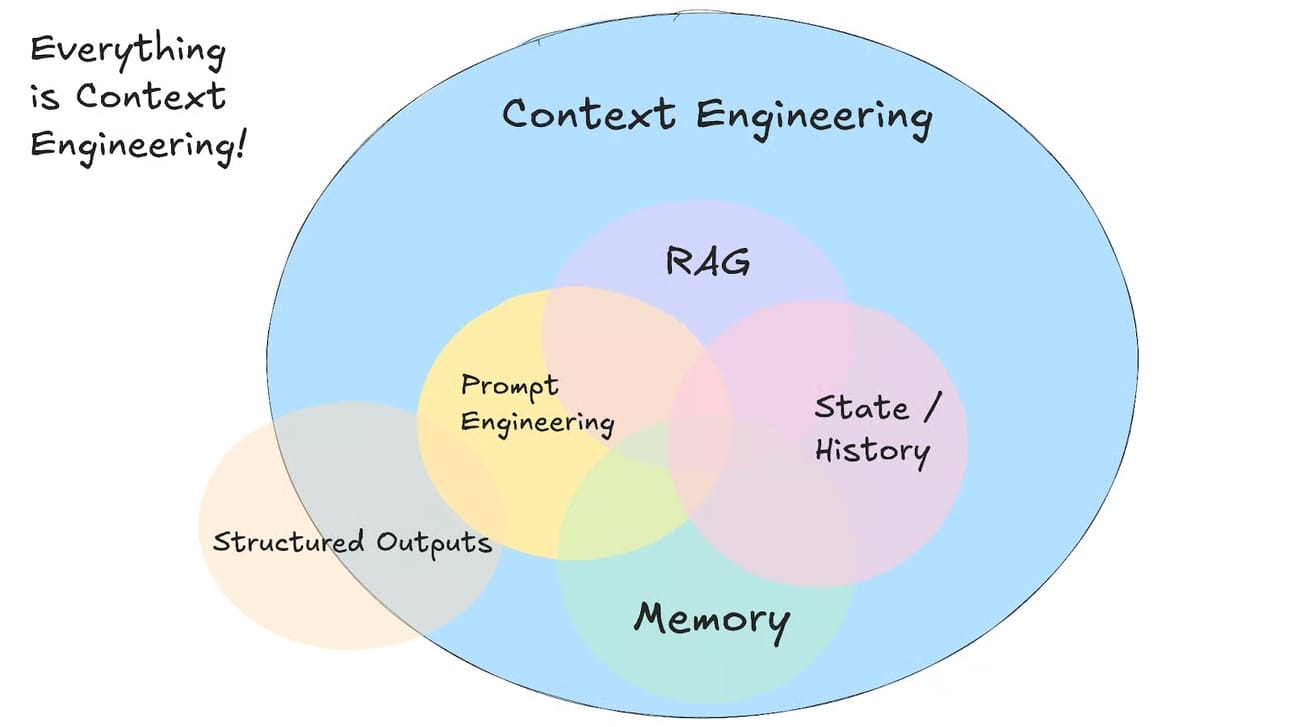
The Engineering Focus Problem
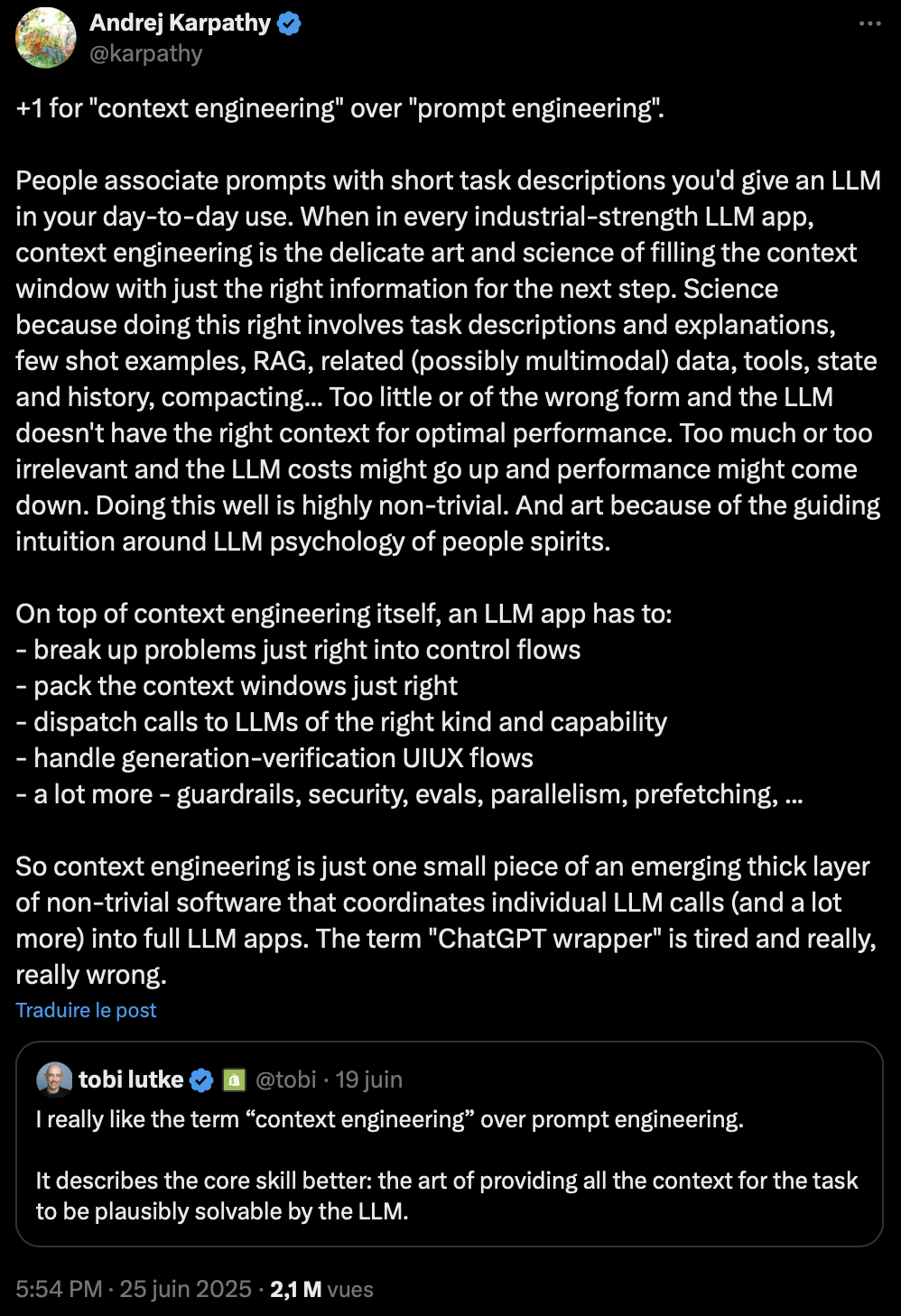
But let’s zoom out. Even the most respected AI leaders (like Andrej Karpathy, check his youtube channel) would agree that optimal performance is only part of the equation.
Context engineering solves technical hurdles, but it’s still incomplete if you forget the human context: the messy, nuanced reality of actual users.
The UX Revelation: It's Always Been About Context
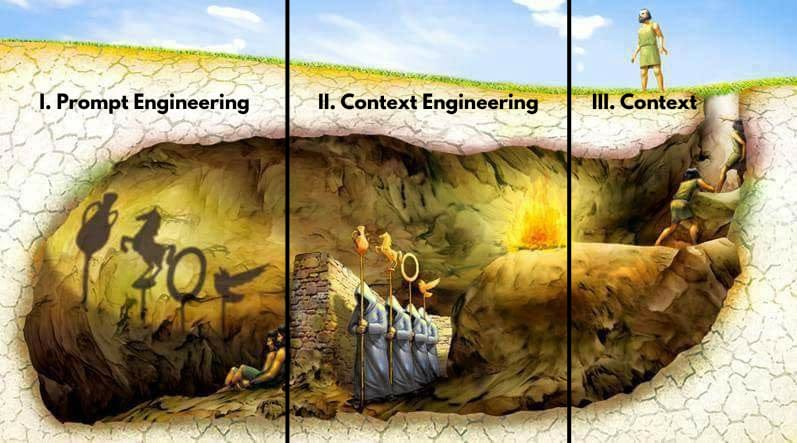
While the AI world was busy reinventing the wheel, the design world had already figured this out decades ago.
Information architecture, a cornerstone of UX design, is about organizing and presenting information so users can understand and navigate it effectively. Sound familiar? It's context engineering, but for humans instead of machines.
Users “interact with features” only because they want to accomplish goals within specific situations. When a designer create a search box, they are thinking about:
- when someone needs to search?
- what they will be looking for?
- what they already know?
- how the results fit into their task?
The context determines the design.
AI systems face the exact same challenge.
Users need to understand what an AI can and cannot do: that's the affordance problem. They need feedback to understand AI responses and guide future interactions.
They need to build trust with technology that can seem unpredictable.
Most importantly, AI systems must understand not just what users say, but what they mean. A user asking "What's the weather like?" might actually mean "Should I bring an umbrella?" or "Can we have the company picnic outside?"
The context: who they are, what they're planning, their past behavior determines the right response.
Context is the “Universal Design Principle”
Whether you're designing a physical object, a digital interface, or an AI system, the fundamental principle remains the same: context shapes everything.
People don't want to learn new systems; they want systems that understand them. They don't want to adapt to technology; they want technology that adapts to their context.
Technical capability must serve user needs, not the other way around. You can build the most sophisticated context engineering system in the world, but if it doesn't understand the human context: the real goals, constraints, and mental models, it will fail.
It's not engineering versus design: Both are necessary but insufficient alone.
The magic happens when technical context (data, models, infrastructure) seamlessly integrates with user context (goals, environment, constraints).
The most successful AI products will be the ones that understand the full context stack, technical AND human, to design experiences that feel natural within that universal context.
The Context-First Future
The journey from prompt engineering to context engineering to context-centered design is about rediscovering fundamental principles of design:
- Understanding the full context of user problems
- Design behaviors that fit into user workflows
- Revealing AI capabilities as users need them
- Helping users understand and improve AI interactions.
Technology changes but context remains: People have goals, constraints and mental models that don’t change with technology.
If you’re building AI products in 2025, don’t just obsess over prompts or infrastructure. Start by understanding the real context of the humans you’re designing for.
More to explore:
Share your thoughts:
How did you like today’s newsletter?
You can share your thoughts at [email protected] or share the newsletter using this link.
Reply